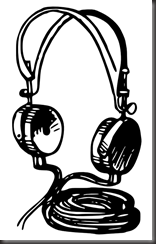There has been a continuing stream of dialog among the LDS genealogy community about the need for folks new to genealogy and LDS temple work to either do dedicated original research or alternately to mine the existing records on FamilySearch Tree to find possible incomplete temple ordinances for family members.
community about the need for folks new to genealogy and LDS temple work to either do dedicated original research or alternately to mine the existing records on FamilySearch Tree to find possible incomplete temple ordinances for family members.
The two camps are polarized in their thoughts, although the old-school researchers seem to be more vociferous in their position on the subject. They regularly declare that original research is THE ONLY way to be involved in securing LDS ordinance reservations. It must be the only method used to discover ancestral family members.
They state that anyone who shortcuts the traditional research process is:
-
Not a real genealogist
-
Not an accurate record keeper
-
Following a path that will lead to their destruction in both their research habits and in the accuracy of their work.
-
Creating duplicate or false ordinance work in LDS temples.
-
Wasting their time. Kidding themselves. Becoming a purveyor of junk data.
Their attitudes and words hurt the feelings newbie researchers and do as much to quash their fledgling interest in genealogy as do the ever present pressures in their lives that range from school to work and to raising a family.
Let’s face facts. Elder Allan F. Packer of the Seventy plainly stated in his 2014 RootsTech talk that less than 3% of LDS church members submit names for temple ordinances.
He noted that “To reach the other 97 percent, we need to change how we think, how we teach and what we teach.”
He went on to say: “These numbers are a cry for change.”
There was good news in his message though: “In the last year the number of members submitting names for temple ordinances is up 17 percent over last year. It has gone from 2.4 to 2.7 percent of the members.”
His message called for the improvement of both member involvement in family history research and in church genealogy curriculum and research tools.
He supported the call for improvement by noting that “in the United States 25 percent of Church members do not have four generations of ancestors in the Family Tree section of the Church’s FamilySearch Internet site. Internationally, 70 percent of members don’t have both parents in Family Tree, 90 percent don’t have their grandparents in it, and 95 percent don’t have their great-grandparents included.”
“These individual members already know the names of the people that are in their first four generations,” he noted. “But our responsibilities go far beyond those first four generations. We need to help all members of the Church find their ancestors.”
His message on this subject wasn’t new although it wouldn’t matter if it was or even if he was the only church leader speaking and teaching on the subject. His assignment in the Presidency of the Seventy includes being the Executive Director of the Family History Department. Not only is his direction in family history work consistent with the goals of the church, it is consistent with direction from the highest level of church leadership
Noting the current lackluster involvement of all church members in family history, the church through their genealogy arm, FamilySearch, has introduced numerous new methods, programs, opportunities and tweaks in curriculum in an effort to help members engage in the work.
Obviously much of the focus is on new researchers ranging from young folks to busy adults. They need opportunities that provide them semi-easy research tools and early successes to reinforce the knowledge that success is possible and enjoyable.
The Family History Department recently released a program named “New Way to Find Cousins” and video directed to them that specifically focuses on using the Descendancy View of Family Tree to find incomplete or missing temple ordinances for members of their ancestral families.
Just over a year ago, they introduced the Memories tools in Family Tree that encourages users of Tree to add photos and stories to the records of their ancestors.
The release has been followed by numerous campaigns that encourage writing and attaching memories about ancestors in Tree like the recent #meetmygrandma campaign.
Several months ago, FamilySearch released two mobile apps, FamilySearch Tree and FamilySearch Memories to make it easier for everyone to access ancestral records on FamilySearch Tree and add information to them.
The tools and methods used in the past hadn’t proven successful with the masses. Something had to change if participation in family history research was to increase. No matter where we reside on the family history research skill spectrum, we need to listen to the words of church leaders and take heed of the programs, tools and education that is being released by the Family History Department through FamilySearch.
It is time for all of us to accept the direction of these programs and help in their success and stop finding reasons why they are wrong. They aren’t wrong. Our vision of “right” is too narrow.
I’m an old-timer in genealogy research like many of you. I’ve been heavily involved in family history research for over 60 years. I’ve taught family history classes for over 30 years and like other instructors throughout the church have spent much of the teaching time focusing on sources, accuracy and avoiding the bane of duplicate records. Hopefully, the long term successful research involvement of my students or my nebulously denoted “success rate” as an instructor exceeds the 3% average of the church. Memory tells me that is true but unfortunately, the long term active involvement research numbers are still far too low.
As a father and grandfather, I’ve taught family members how to “do” genealogy research. We’ve enjoyed research trips to the Family History Library in Salt Lake City and to libraries in other locations as well as numerous trips to ancestral sites including their residences, cemeteries, local historical societies and the rest of the commonly visited research venues.
We’ve had a good time. We’ve found ancestral records. We’ve been successful.
All too often the “We” in these sentences has been the royal “We” with me sitting on the throne of royalty.
Real success in helping them engage and actually love the research engagement has been when we’ve used similar tools and the objectives that FamilySearch is using now.
http://www.gettyimages.com/detail/photo/grandmother-and-granddaughter-share-a-special-royalty-free-image/89599922
Sessions of dry research never stoked the love of family history in their lives, but it flourished when ancestral stories and photos were introduced. Confidence in research success was never achieved until I purposely directed them to resources that I knew would result in the discovery of ancestral records.
Ordinance work that they performed for their ancestors was never as sacred or internalized as it has been since they have been an integral part of our ancestral research. Their confidence is built on their research skills and on the stories and photos about their ancestors that were found and written during the research process.
Is the LDS Church and its Family History Department asking researchers to abandon source proven records, avoidance of duplication and engage in speculation and low value ancestral information?
Absolutely not!
They are asking us old timers to look in a different teaching and experiential window than the one we’ve known and focused on for generations. We are still needed to produce the stream of accurate new records, but we are too few and too relatively slow in the production of those records.
A much broader spectrum of involvement by all church members and researchers worldwide is required for the ultimate success required by the Lord.
Come on Old Timers and Journeyman Researchers, stop hogging all of the research fun and stop trying to assume all of the research responsibility. Share and encourage it with everyone. Help them be successful in their ancestral quest.
It all starts with baby steps. Think back far enough and you’ll remember when you too wore the infant shoes of a new researcher that you’ve now bronzed and proudly display for others to see.
It’s time to realize the promises of Elijah in turning our hearts to our ancestors. Let’s gently and encouragingly share our hard won skills and knowledge as we help new researchers successfully achieve their own goal of being successful, accurate family history research scholars who along with their families hope to be Saviors on Mount Zion.
© Article Posted 18 Oct 2014 by Lee R. Drew on Lee Drew’s Views
 The illusion of WiFi anonymity is gone for Comcast users. Many of my acquaintances have purposely named their WiFi routers with innocuous names thinking that it helps keep them below the radar of eavesdroppers. Unfortunately, Comcast is turning their WiFi routers into public hotspots if they use a Comcast / XFINITY provided router.
The illusion of WiFi anonymity is gone for Comcast users. Many of my acquaintances have purposely named their WiFi routers with innocuous names thinking that it helps keep them below the radar of eavesdroppers. Unfortunately, Comcast is turning their WiFi routers into public hotspots if they use a Comcast / XFINITY provided router. 




